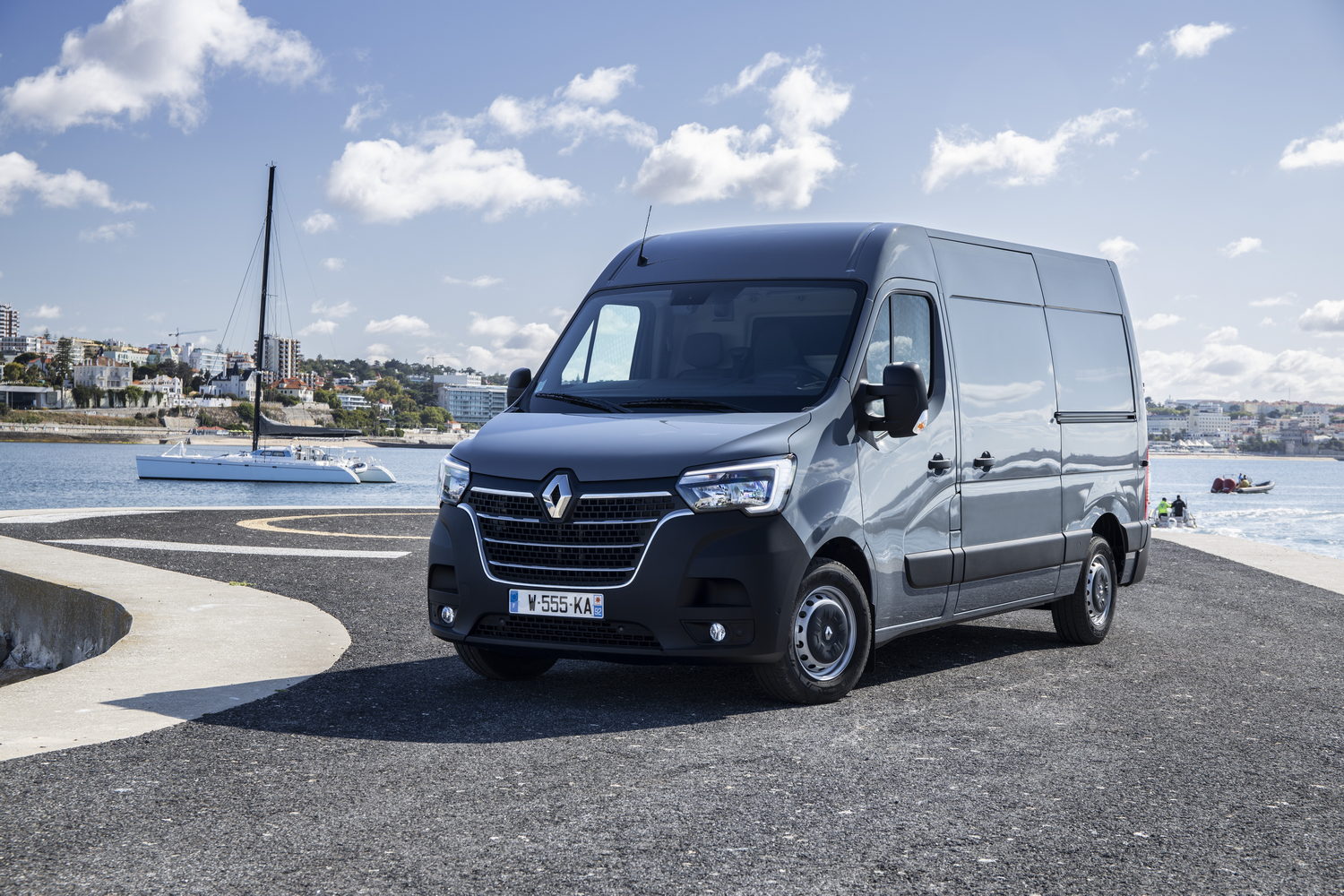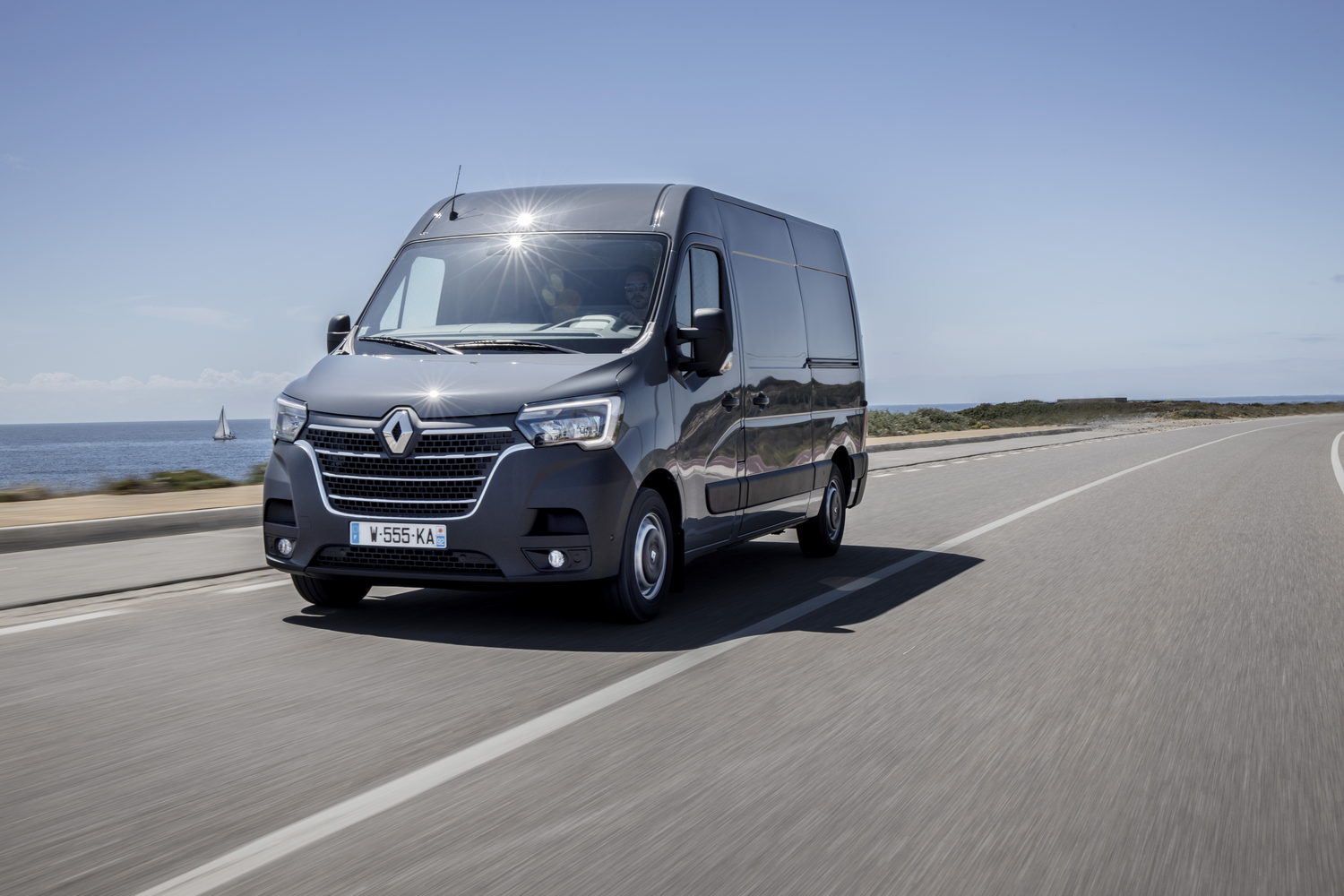Renault Master overview
The Renault Master is the largest van in the French firm’s Pro+ range of commercial vehicles. It offers one of the most extensive line-ups available in Ireland, with a wide variety of body styles on offer. It’s not at the cutting edge for tech, but an update in 2018 ensured the Master remained in the running in the large van class, while pricing is competitive, too.
There are a variety of panel van options available, with no less than four body lengths on offer in three wheelbases, while three roof heights are also available. There’s a choice of front- or rear-wheel-drive layouts, and the latter is offered with a twin-wheel rear axle upgrade for coping with heavy payloads. Renault offers versions of the Master at 3.5 and 4.5 tonne gross vehicle weights (GVW), although it’s only the former that can be driven on a standard car licence.
As well as the panel vans, Renault also offers two- and four-door chassis cab variants and a platform cab option, too. These can be kitted out with your own bespoke bodywork, or Renault offers off-the-shelf conversions in the form of Dropside and Tipper variants.
Power comes from a 2.3-litre four-cylinder diesel engine that has been updated over time to meet new emissions regulations, while still offering good pulling power. Power outputs vary depending on which model you go for. Vans under 3.5 GVW come in dCi 135, 150 and 180 guises, with the numbers representing their respective power outputs in hp. Vans up to 4.5 GVW come with dCi 130 and 145 diesels, which meet less stringent emissions criteria. All vans come with a six-speed manual gearbox as standard, while a six-speed auto is available with the dCi 150 engine in selected front-wheel-drive body styles.
An alternative to the diesel models is the all-electric Renault Master E-Tech. Previously known as the Master ZE (E-Tech ties the van in with a range of new electric and hybrid models coming from Renault), the electric Master is based on the front-wheel-drive diesel van. It doesn’t come in as many body styles, but there are three lengths and two roof heights, while Platform Cab and Chassis cabs in two lengths are also offered. This is something that’s relatively unique in the electric van sector at the moment. The Master E-Tech houses an electric motor under the bonnet and it’s the same one found in the Zoe supermini, so it’s not a very quick van. At least the battery is under the cargo floor, so load volumes are unaffected. A quote driving range of up to 120 kilometres is limiting, though.
Renault Master range
Since it’s a no-nonsense work vehicle, Renault has kept the Master range simple. There are Business and Business+ trims, plus a range of options and conversion upgrades that can help you create the ideal van for your needs.
Business versions feature a single sliding side door, a full steel bulkhead, heated electric door mirrors, remote central locking, electronic stability control with hill-start assist, trailer swing assist and Renault’s Grip Xtend system that improves off-road traction. There are C-shaped daytime running lights, an immobiliser and disc brakes all round, while crew vans add left- and right-side glazed sliding doors and a four-seat bench.
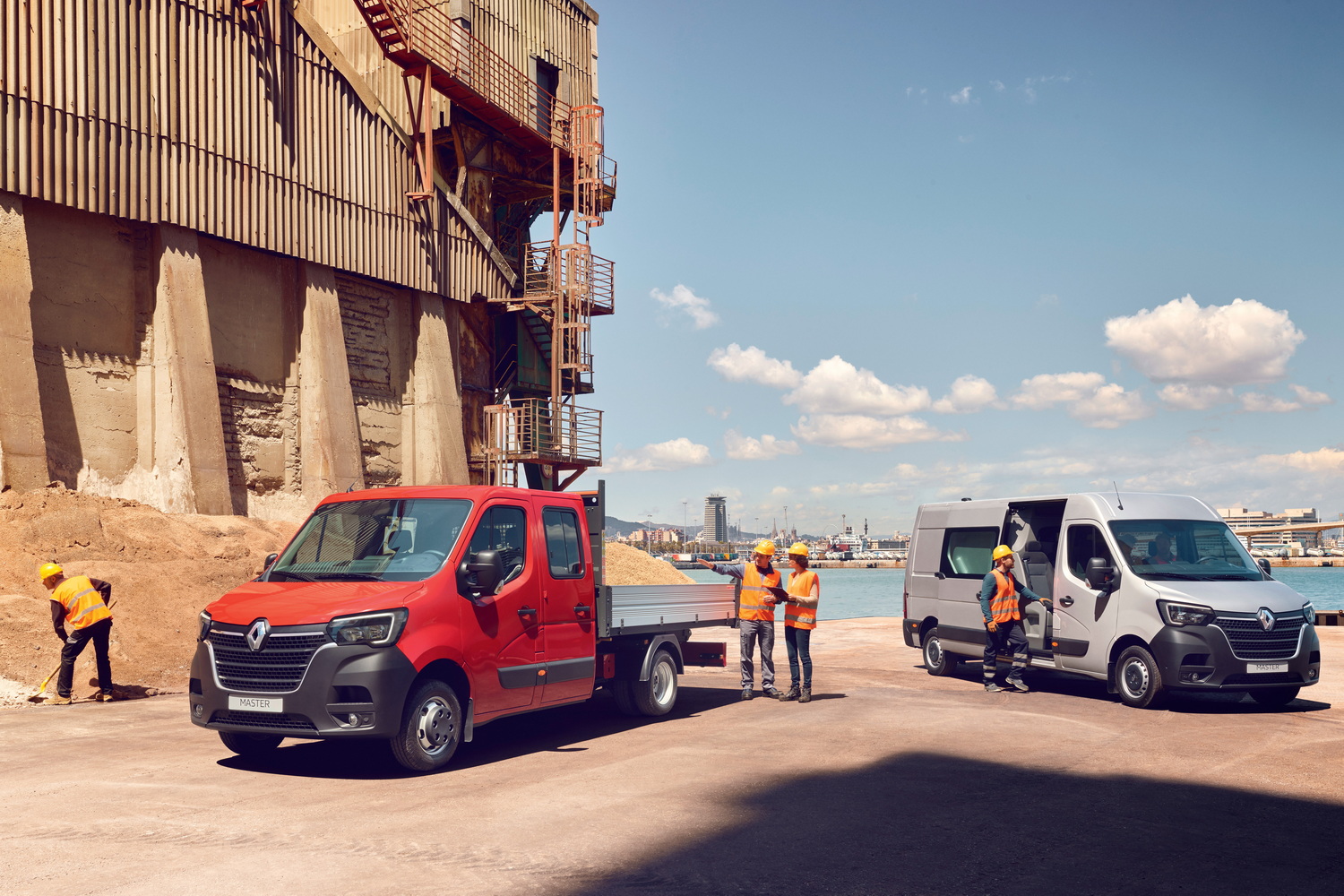
Business+ has modest upgrades, including air conditioning, electric windows, a suspended driver’s seat, rear parking sensors and full-size wheel trims. All versions come with a DAB radio featuring Bluetooth and a USB socket, while a trip computer is included, as are a host of storage options in the cab.
Upgrades include twin wheels for the rear-wheel-drive vans, while air suspension and a vast 105-litre fuel tank boost everyday driving. Convenience features include a rear camera, front and rear parking sensors, auto lights and wipers, lane departure warning and even a permanent rear-view camera. Renault’s MediaNav touchscreen infotainment, LED interior lighting and alloy wheels are also available.
Renault Master interior
As you might expect, there’s plenty of space in the Master’s cab for three occupants, while the high seating position and large, wide-angle mirrors offer a good view out. The hard-wearing plastics used inside never let you forget that you’re driving a van, but the update in 2018 at least made them a uniform shade of grey that looks smarter than the previous two-tone plastics that were used. There’s lots of storage in the cab, with trays on top of the dashboard, decent cup holders and room on the doors for split-level bins. The middle passenger seat back also folds down to create a tray table.
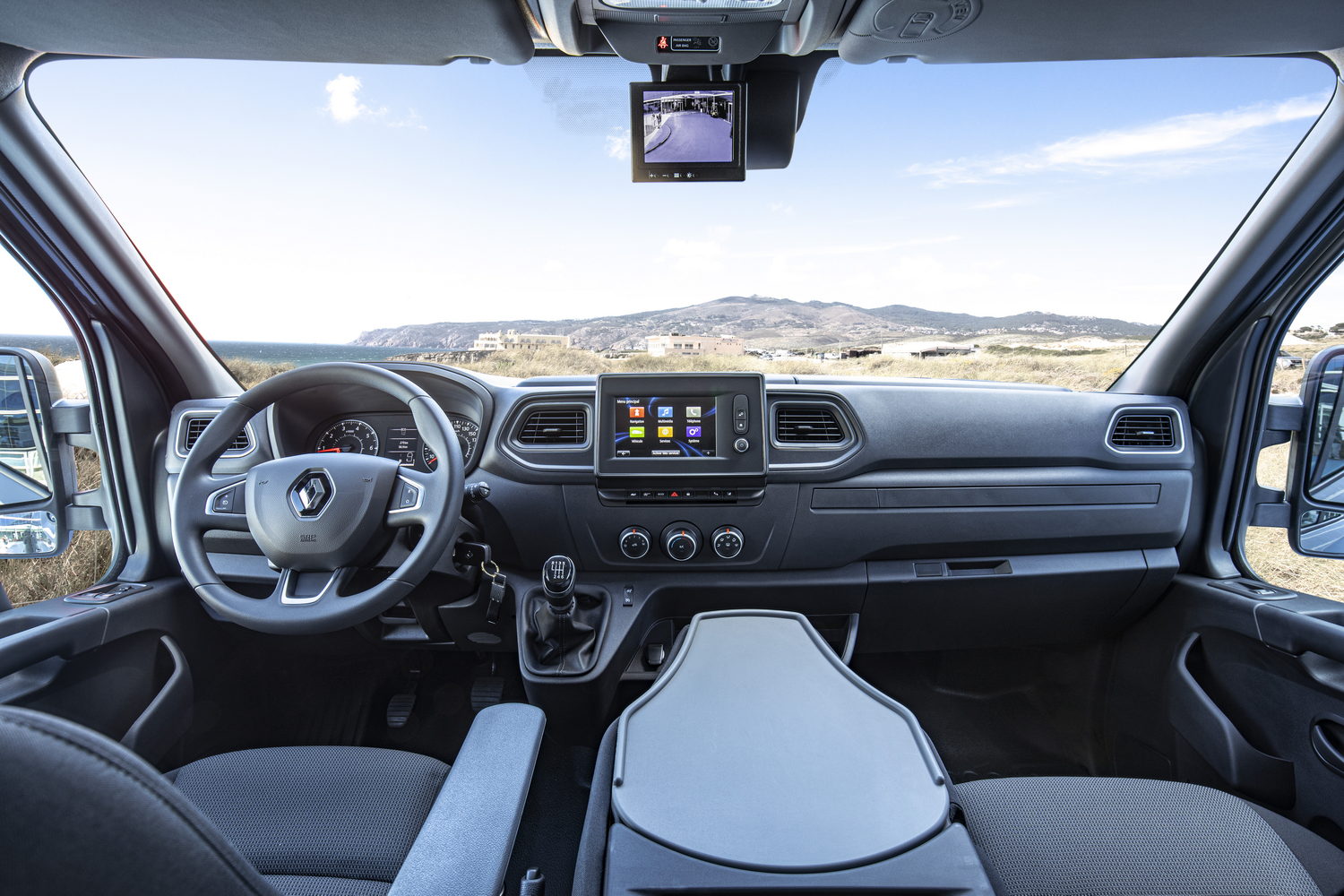
The Master Crew Van offers up to seven passenger seats, with a four-seat bench added in the back. You also get twin sliding doors with glazing, while the steel bulkhead remains behind the bench. Access to the panel van’s cargo area is straightforward via the single sliding side door, while a second sliding door is offered as an option. The back doors can open to 270 degrees and are held open with magnetic retainers. Go for one of the longest L3 or L4 models with a high roof and you’ll be able to carry just about anything. Be warned, though: while these versions have the most cargo volume, they can’t take the heaviest payloads. If you’re going to be moving weighty items, then it might be better to go for a smaller L1 or L2 van with a higher payload capacity to make sure you stay legal.
Renault Master driving experience
Renault’s 2.3-litre diesel isn’t the most refined engine around, while the basic cabin lacks sound deadening to help quieten things down. Still, there’s plenty of power on offer, even with the dCi 135 engine, and while Renault’s six-speed manual gearbox has a fairly slack shift, it’s fine once you’re in tune with it.
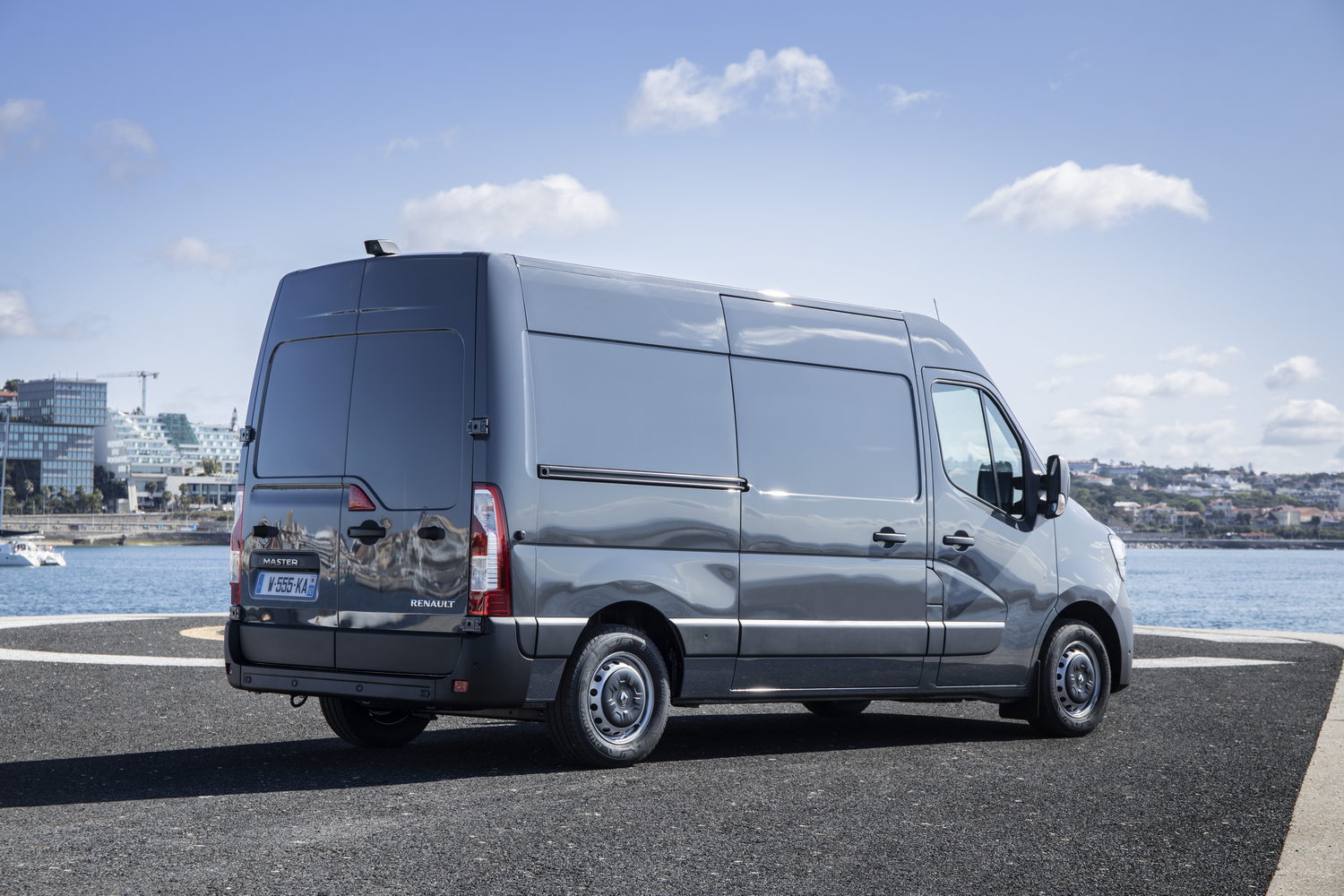
The tall driving position and big mirrors mean placing the van on the road is simple, but we’d definitely recommend adding a rear camera or parking sensors to help you when reversing. Renault offers a permanent camera as an alternative to a rear-view mirror, while a separate reversing camera is also offered. Earlier versions of the Master had their touchscreen infotainment mounted where a rear-view mirror would normally sit, but the update in 2018 moved this to a more conventional dashboard location.
The diesel offers satisfactory performance, but it’s not as relaxing to drive as the Master E-Tech. The electric van moves off in silence, with the only real noise being the artificial whirr that Renault adds to its EVs at slow speeds, and the sound of debris pinging off the tyres into the front wheelarches. Performance is sedate - blame the small Zoe-sourced electric motor for that - but it does at least mean that the electric Master can actually achieve its predicted range - as long as it’s not too cold outside.
Renault Master alternatives
The Ford Transit is synonymous with the van sector, and it’s a strong contender in the large van class, with a variety of body, drivetrain and equipment options. The Mercedes Sprinter is another van that comes in a wide range of body styles. There are fewer engine options, but the electric eSprinter is available with a similar driving range to the Master E-Tech.
Elsewhere, the Volkswagen Crafter is an upmarket choice that comes with car-like tech and driving and safety systems that other vans can’t quite match, although it’s a bit pricey when compared with the Renault Master. Also available is the MAN TGE, which is a rebadged Crafter that offers the same positives as the VW.
The creation of the Stellantis group in 2019 saw a shake-up in the large van class. Until then the Opel Movano was simply a rebadged Master - much like the Nissan NV400 still is. But now that Opel is aligned with Renault’s arch-rivals Peugeot and Citroen, a new Movano was launched in 2021, which is a rebadged version of the Peugeot Boxer and Citroen Relay. Go for the diesels, and you get a big-capacity four-cylinder that’s noisy but performs well. All three are now available with electric drive, which will eliminate those issues, but are better suited to short delivery routes and low daily mileages.
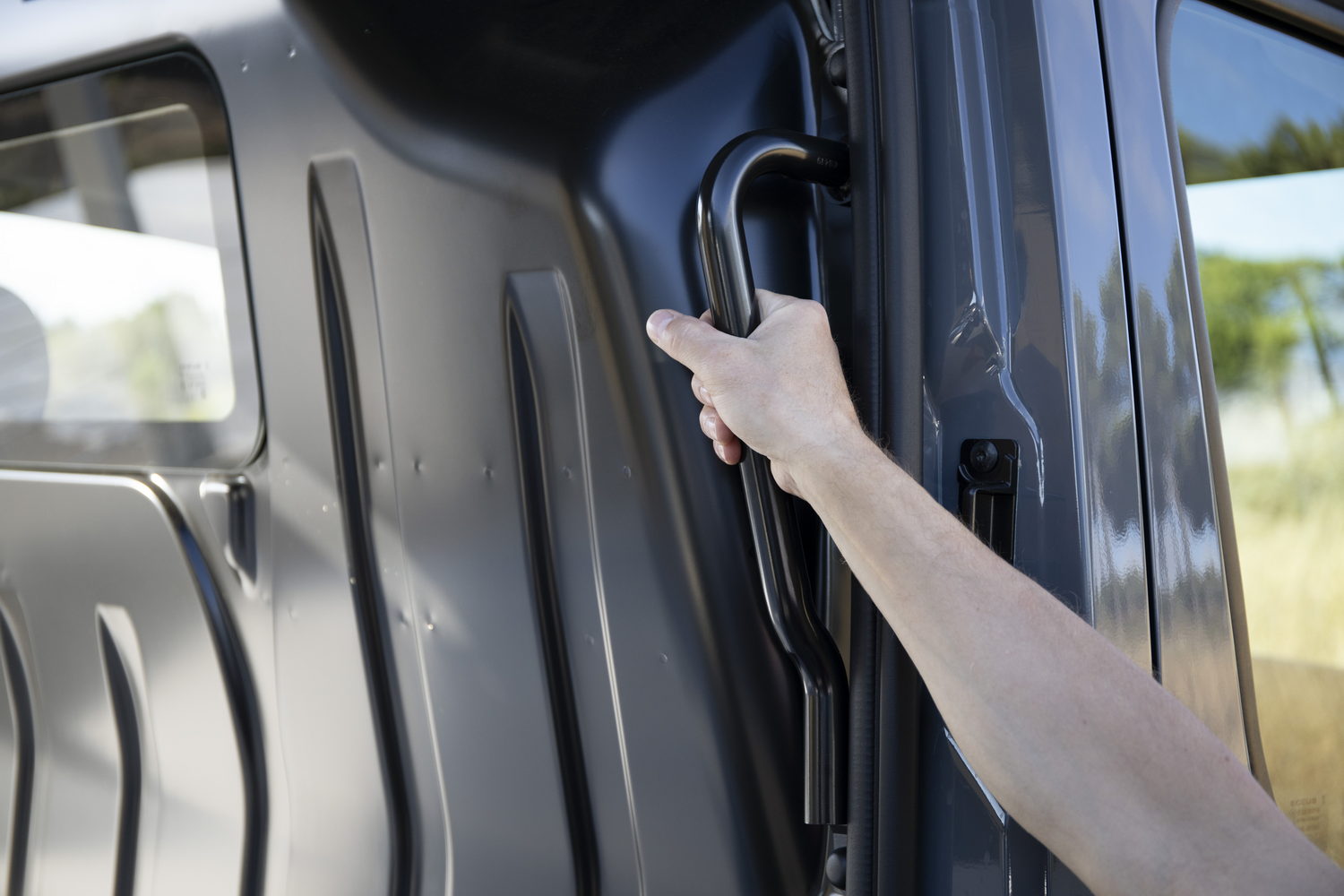
Other options include the Fiat Ducato, which already shares tech with the Citroen/Opel/Peugeot trio but is fitted with Fiat engines. Again, there’s an e-Ducato available for urban deliveries, but this has been developed separately from its sister models. Elsewhere, the Iveco Daily doesn’t get electric drive and offers a more commercial vehicle type of driving experience. It comes in a variety of panel van and pick-up body styles, while the firm has some interesting developments in terms of compressed natural gas (CNG) power. Finally there’s the Maxus Deliver 9 and e-Deliver 9, two large vans that are competitively priced. The e-Deliver promises low running costs and a long electric driving range, too.
Renault Master summary
With a broad range of body styles and conversions available from the factory, the Renault Master has most bases covered in the large van class. It offers relatively good value, while the big diesel should deliver plenty of power for your needs. The electric Master E-Tech could make sense if you only do short urban trips, while its high price is countered by super-low everyday running costs. There are better vans available, but the Master is a no-nonsense pick that shouldn’t let you down.
